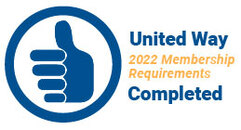|
August 21, 2020 brought an end to something that has been incredibly significant and important to me. It was the completion date for my second year of AmeriCorps service in the United Against Opioid Abuse campaign. This is a bittersweet time of reflection considering how far our community has come in the past two years! Along with many partners in the community, we have created the United Council on Opioids (UCO), garnered community support and engaged many community members in creating awareness of and solutions for the complexities of the substance use crisis.
It is easy to talk about the numbers: $1, 412,400 is the amount of grant funding brought into White County to address substance use issues and the QRT. 7500 resource cards were printed with contact information for those needing services and support. 3400 hours were served in AmeriCorps service over the past two years. Seven hundred seventeen people attended the fifty three UCO meetings. There have also been: 508 UCO Facebook posts, 500 hours professional development and training, 500 treatment brochures printed, 322 meetings attended, including 51 Zoom meetings since April, 149 followers and likes for the UCO Facebook page, 81 This is for You, Chad weekly columns, 22 PowerPoints and presentations to various groups, four anti-stigma/awareness billboard campaigns. Three has a triple play: Three Community assessments, three seminars for employers on Substance Use and the Workplace, and three nationally known speakers (Justin Beattey of the Indiana Peer Recovery Support Services, Justin Phillips of Lifeline Recovery, and Mike Thibideau of Indiana Wellness Recovery). Two years of AmeriCorps service and one final article that didn’t require red-pen edits from White County United Way executive director, Nikie Jenkinson, who had the foresight and courage to bring the AmeriCorps program to White County. But the numbers don’t tell the whole story. They don’t communicate the accomplishments of the UCO—the increased community awareness and understanding of substance misuse, the decrease of stigma for those who struggle with addiction, the amount of increased collaboration and communication between agencies, and the changed level and kinds of conversation around this topic. The numbers don’t reflect the individuals who have engaged not only in conversation but the hard work of creating goals and accomplishing them to improve our community. Nowhere in the numbers are the challenges we have overcome and those that still remain: funding, building recovery capital and services, increasing treatment options, overcoming transportation barriers, and keeping up the momentum (especially during COVID.) The numbers also do not reflect my personal growth in this process. This has been a wonderfully enriching experience for me personally. I have developed scores of new relationships and deep friendships. I have learned about substances, treatment, recovery, leadership, and especially the power of collaboration—people working together to create a better community. One of the most surprising aspects of this journey has been uncovering the writer deep inside me. This column has been a source of joy and satisfaction. I have learned to research, write, rewrite, unwrite, be edited by a gifted friend, and to honor the Oxford comma. I have been touched by the response of the community and the comments you have made to me on the articles. And so, dear reader, I will close my final column. Thank you for sharing in this journey, being willing to learn and grow with me. Be kind to those who are struggling and do what you can to give them hope that substance use is not the end of their story. Recovery is possible. God bless.
0 Comments
Your comment will be posted after it is approved.
Leave a Reply. |
AuthorLynn Saylor is the AmeriCorps member working with the United Against Opioid Abuse Initiative alongside the White County United Way. She is a major facilitator of the United Council on Opioids serving White County and a regular contributor to local media. Archives
October 2020
Categories
All
|

 RSS Feed
RSS Feed
